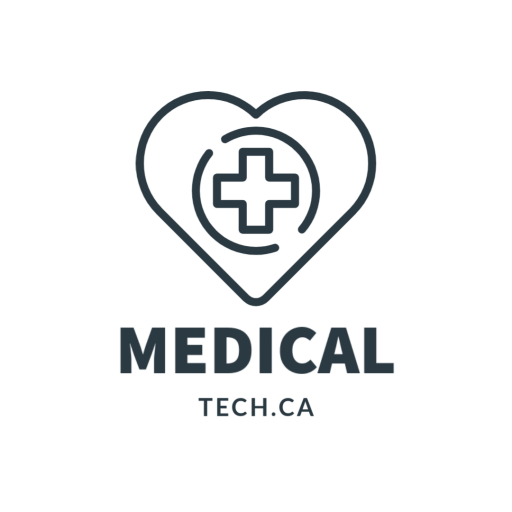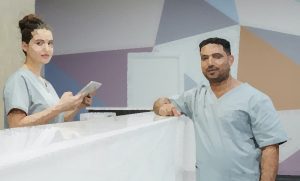
by medicaltechont | Mar 7, 2022 | Cloud, Electronic Medical Records, hackers, Healthcare, Hospitals
Mon Health discovered the second data security incident on December 18, 2021, when it detected unusual network activity. After the discovery, Mon Health disabled a “significant portion” of its IT network and initiated downtime procedures.
The breach did not involve Mon Health’s EHR systems. Still, it potentially exposed the names, addresses, Medicare claim numbers, Social Security numbers, birth dates, health insurance plan member ID numbers, dates of service, patient account numbers, medical information, and health plan enrollment status of some patients, providers, employees, and contractors.
Mon Health discovered the second data security incident on December 18, 2021, when it detected unusual network activity. After the discovery, Mon Health disabled a “significant portion” of its IT network and initiated downtime procedures.
The breach did not involve Mon Health’s EHR systems. Still, it potentially exposed the names, addresses, Medicare claim numbers, Social Security numbers, birth dates, health insurance plan member ID numbers, dates of service, patient account numbers, medical information, and health plan enrollment status of some patients, providers, employees, and contractors.
Click here to read more.

by medicaltechont | Jun 9, 2018 | Canada, Cloud, e-Health, eHealth, Election, Electronic Medical Records, Healthcare, Hospitals, Medical Records, Technology
I have been a family physician practising in this province for 30 years. It is a great joy looking after my patients. However, looking after them in the health care quagmire of disconnected information and bureaucratic silos is becoming a nightmare. It is alarming seeing my young colleagues bewildered so early in their careers, and new graduates of family medicine are afraid to set up practice.
The province is carved up into 14 Local Health Integration Networks and 76 sub-LHINs each seemingly reinventing the wheel while consultants analyze the same things over and over again. There is an obsession with accountability frameworks designed by this ever growing bureaucracy that has little idea about what we actually do and what tools we need to do our job.
Hundreds of millions of dollars have been spent on a huge array of electronic repositories and information systems that don’t integrate at the most basic level with each other years after they were built. Providers spend countless hours trying to locate who does what where and what hoops to jump through to get appointments. We fax long paper forms with lab and other reports that are somehow not available from these expensive repositories. We typically access each other by phone in the absence of electronic messaging capabilities.
Read more at https://www.thespec.com/opinion-story/8651966-survival-at-the-front-lines-of-the-health-care-quagmire/

by medicaltechont | Apr 7, 2018 | eHealth, EHR, Hospitals, Security
An Ontario hospital last fall accounted for over three quarters of the exposed and unusued IP addresses or connected devices among medical institutions around the globe, according to research conducted by two security vendors.
Read more at https://www.itworldcanada.com/article/ontario-hospitals-exposure-of-tens-of-thousands-of-unused-ip-addresses-was-risky-says-study/403606

by medicaltechont | Jan 28, 2018 | Hospitals
Shafi Ahmed dons a pair of digital sunglasses and explains how the tiny lenses built into its black plastic frame, which can capture high-resolution images, are transforming how doctors get trained in operating rooms.
The British colorectal surgeon used Snap Inc.’s high-tech spectacles a year ago to walk rookie physicians and millions of curious viewers through a hernia operation using the Snapchat photo-sharing app. In 2018, he plans to beam his avatar into operating rooms with so-called immersive technology, which spans everything from military training to adult entertainment, and promises to support the next generation of doctors with real-time supervision and tutelage.
“Doctors do not need to feel out of their depth, and this technology will allow them to get help whenever required,” says Ahmed, whose early adoption of digital technology and social media has seen him recognized as the planet’s
most-watched surgeon, with more than 2 million views and 50 million
Twitter posts for the Snapchat surgery alone. “We all need support and help when faced with a tricky situation.”

by medicaltechont | May 6, 2017 | EHR, Electronic Medical Records, emr, Healthcare, Hospitals, Ontario
Three Ontario hospitals recently announced they are joining hands to share an implementation of Meditech’s latest electronic medical records system, called the Meditech Web EHR.
Markham Stouffville Hospital, in Markham, Ont., will host the system, and a single, shareable electronic health record will be created for patients at Markham Stouffville, Southlake Regional Health Centre, in Newmarket, Ont., and the Stevenson Memorial Hospital, in Alliston, Ont.
The new project is being called SHINE – short for Shared Health Information Network Exchange.
Read more at http://www.canhealth.com/blog/three-ontario-hospitals-announce-plans-to-share-patient-record-system/

by medicaltechont | Mar 6, 2017 | hackers, Healthcare, Hospitals, Medical Records, Security
HACKED MEDICAL DEVICES make for scary headlines. Dick Cheney ordered changes to his pacemaker to better protect it from hackers. Johnson & Johnson warned customers about a security bug in one of its insulin pumps last fall. And St. Jude has spent months dealing with the fallout of vulnerabilities in some of the company’s defibrillators, pacemakers, and other medical electronics. You’d think by now medical device companies would have learned something about security reform. Experts warn they haven’t.
Read more at https://www.wired.com/2017/03/medical-devices-next-security-nightmare/






